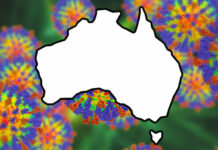A recent study of coronial inquest findings revealed medicines relating to mental health conditions (antidepressants, antipsychotics) were most commonly implicated in non-opioid and non-benzodiazepine accidental drug-related deaths, with increasing prevalence over the 5-year study period.1
Although pharmacists were not implicated in the vast majority of these deaths, coronial understanding of the pharmacist’s role in the safe use of medicines was admittedly lacking.
The study, published in the Journal of Pharmacy Practice and Research, found that a history of mental health illness is common in non-opioid and non-benzodiazepine accidental drug-related deaths in Australia.
The study was undertaken in response to the rapid increase in deaths due to accidental drug poisoning between 2001 and 2015, with the deaths numbering almost 1,500 every year, exceeding the national road toll.1
The primary medicines leading to accidental overdose were found to be opioids, benzodiazepines and alcohol, either taken as a sole agent or in a mixed drug combination.
Alcohol, in a non-toxic level, was the most prevalent drug contributing to mixed drug-related deaths.
Interestingly, pharmaceutical medicines factored in the majority of overdoses (80%), and a pharmaceutical medicine was the sole drug implicated in less than 30% of the deaths in Victoria.1
Coronial inquests have been found to be helpful in the development of public health action.
An analysis of coronial findings for non-opioid and non-benzodiazepine drug-related deaths between January 2012 and October 2017 used the coroner’s findings to:
- Identify medicines other than benzodiazepines and opioids that have contributed to the increase in drug-related deaths in Australia
- Identify possible warning signs in patients that may be at risk of drug-related death
- group the recommendations relevant to pharmacists that were made to ensure patient safety and reduce the likelihood of drug-related deaths.1
From a total of 1,932 published coroner findings, 100 cases were pharmaceutical drug-related deaths. Excluding those not meeting the study criteria, 33 death cases were examined. The study identified a total of 52 scheduled pharmaceutical medicines and four unscheduled substances with pharmaceutical properties across the 33 coronial findings.
The medicines that most often contributed to deaths were those used to treat mental health conditions. There was also an increase in the prevalence of these medicines in drug-related deaths over the course of the data collection period.1
The concurrent mental health conditions most linked to drug-related deaths were anxiety and depression (36%), confirming these conditions as significant risk factors in accidental drug-related deaths.
Although numbers were small, other conditions included other mental health disorders (33%), alcohol abuse (21%), illicit drug use (18%) previous incidence of overdose, suicide attempt or threats of suicide (18%), chronic pain (15%), and prescription medication misuse (12%).1
Over the 5-year period there were increases in cases associated with antidepressants and antipsychotics. The leading implicated drugs were alcohol (n = 5) and quetiapine (n = 3). Digoxin was found to be the sole contributor on two occasions. Citalopram and paracetamol were identified as the sole drug in a single event, and each was also implicated in a multidrug toxicity event.
Almost half (48.5%) of the coronial findings were linked to the top 10 drugs. Narrow therapeutic index drugs (warfarin, digoxin, lithium and clozapine) related to 18% of deaths. Over half (51.5%) were related to single-drug toxicity.1
The role of the pharmacist
Of the analysed findings, pharmacists were only mentioned in 15% of the cases. The references mainly consisted of evidence relating to dispensing practice, hospital discharge, and the necessity to maintain accurate patient records.
Pharmacists were referenced in five findings. In one case the pharmacist was found to have contributed to the cause of death. They did not confirm the dose on a prescription for methotrexate which was prescribed daily instead of weekly. The Pharmacy Board of Australia provided their 2009 Guidelines for Dispensing of Medicines to the coroner in response to this case.1
As a result the coroner revised his or her assumption that pharmacists are obliged to comply with prescribing doctors.
This study highlighted the role of the pharmacist, that is not limited to the requirement to maintain accurate records. Many of the recommendations made to general practitioners (GPs) are also applicable to the pharmacist’s role in promoting safe use of medicines through practices such as dispensing and patient counselling.1
The study also recommended increased monitoring at commencement of narrow therapeutic index medicines or addition of a medicine to a patient’s treatment plan. Patient allergies should be identified and documented, as anaphylactic reactions were responsible for 6% of deaths.
The study recommended a ‘greater appreciation by coroners of the role of the pharmacist as independent gatekeepers between prescriber and patient’ to promote the safe use of medicines.1
PSA released their updated Clinical Interventions guidelines in 2018. The document reflects that the pharmacist is professionally accountable for a patient’s care and recommends steps that can be undertaken if a pharmacist feels a medicine is inappropriate or unsafe to dispense.
Dr Mark Naunton, co-author of the study and Head and Professor of Pharmacy at the University of Canberra’s Faculty of Health, said that the results, perhaps unfortunately, reflect the high prevalence of mental health conditions in the Australian community.
‘The rise in deaths related to the use of antidepressants and antipsychotics over the studied period most likely reflects this increasing prevalence of mental health conditions and therefore an increased use of medicines to treat these conditions,’ he said.
But while the issue is complex and has no easy solution, Dr Naunton said pharmacists are well-placed to monitor both ongoing medication use and patient wellbeing in those with mental health conditions. Furthermore, they can recommend appropriate interventions – for example, encourage patients to consult their GP or psychologist/psychiatrist, and use of staged medication supply – when there are concerns over apparent deteriorations in mental health status.
In relation to the perception of the pharmacist’s role, Dr Naunton said it seems that many people are still unclear on the level of expertise that pharmacists possess.
‘Continued media coverage to the public on how pharmacists are trained and what expertise they have might start making an impact,’ he said.
‘Perhaps it is also critical for coroners to be educated about the expertise of a pharmacist for future inquests. Our professional societies and organisations could work together on this area to broaden coroner and community understanding of the training and knowledge of the pharmacist.’
References
- Phillips H, Naunton, M, Jackson SL, Kosari S, Peterson GM. Coronial findings pertaining to non-opioid and non-benzodiazepine drug-related deaths in Australia, Journal of Pharmacy Practice and Research 2019. doi: 10.1002/jppr.1514. At: https://onlinelibrary.wiley.com/doi/full/10.1002/jppr.1514




 Dr Malcolm Gillies[/caption]
Dr Malcolm Gillies[/caption]

 PSA SA/NT Pharmacist of the Year Natasha Downing MPS[/caption]
PSA SA/NT Pharmacist of the Year Natasha Downing MPS[/caption]
 PSA SA/NT ECP of the Year Raymond Truong MPS[/caption]
PSA SA/NT ECP of the Year Raymond Truong MPS[/caption]
 PSA SA/NT Intern of the YearChloe Hall MPS[/caption]
PSA SA/NT Intern of the YearChloe Hall MPS[/caption]
 PSA SA/NT Lifetime Achievment Award recipient Peter Halstead FPS[/caption]
PSA SA/NT Lifetime Achievment Award recipient Peter Halstead FPS[/caption]
 Pharmaceutical Society Gold Medal recipient Amelia Thompson[/caption]
Pharmaceutical Society Gold Medal recipient Amelia Thompson[/caption]

 Prof Danchin is a consultant paediatrician at the Royal Children’s Hospital and Clinician Scientist, University of Melbourne.
Prof Danchin is a consultant paediatrician at the Royal Children’s Hospital and Clinician Scientist, University of Melbourne.
 Overview of the categories
Overview of the categories  Category B3
Category B3

 Patient considerations
Patient considerations








